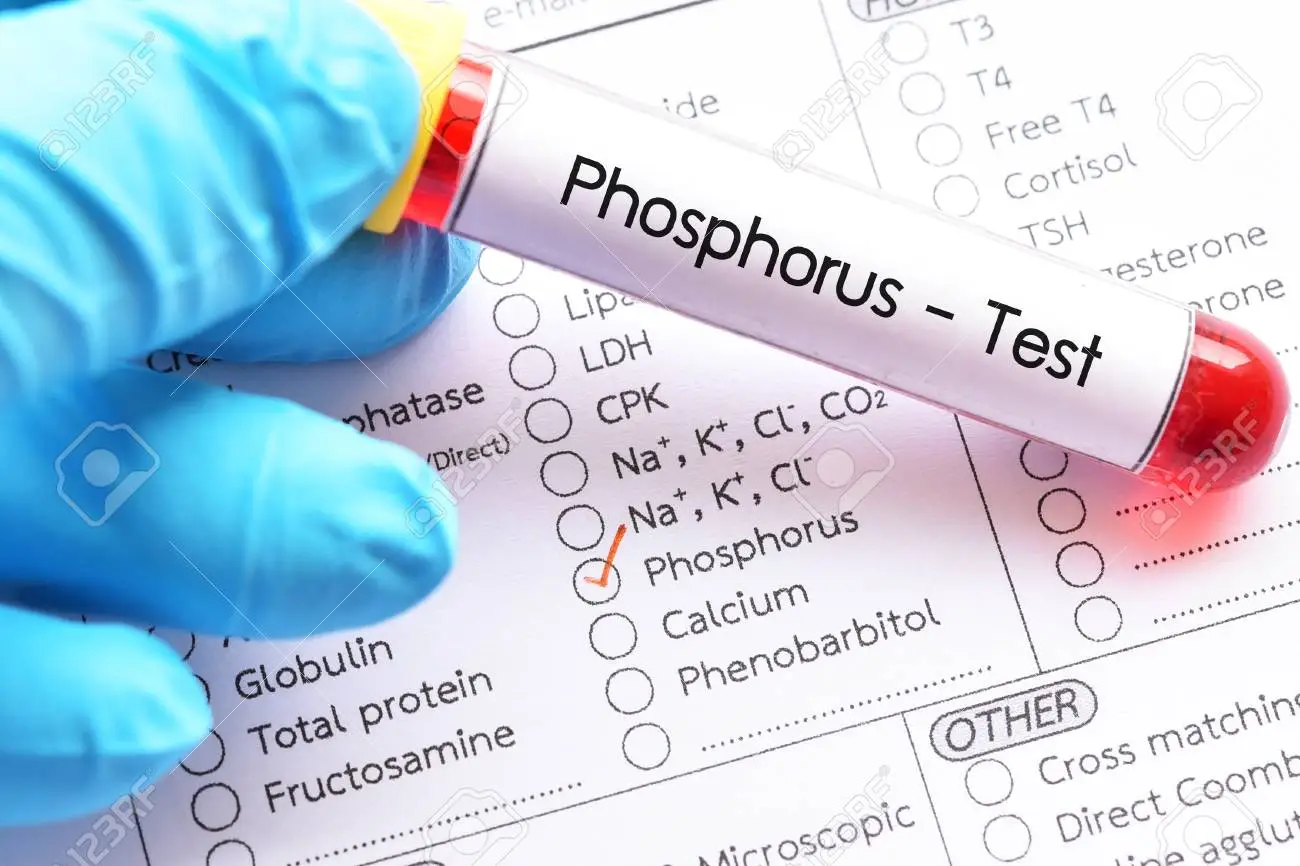Serum Phosphorus is a test that measures the amount of Phosphorus in your blood. The total amount of phosphorus in our body is 530 grams and 87% of it is found in bones, while the other Phosphorus is found in the blood and tissues. Also, phosphorus is found in many foods.
Apart from this, Phosphorus is very important in acid-base regulation, especially in the kidneys.
Phosphorus in the blood is found in the following conditions:
- Inorganic Phosphorus
- Organic phosphorus
- Phosphorus within Lipid
- Residual Phosphorus
Red blood cells contain more phosphorus than plasma. Phosphorus is absorbed along with calcium in the jejunum and absorbed into the skeleton. And phosphate is excreted from the kidneys. There are two ways by which phosphate is excreted from the body through the kidneys.
- Glomerular filtration
- Active tubular reabsorption

Hyperphosphatasemia:
If the amount of phosphorus in the body exceeds the normal amount, it is called Hyperphosphatasemia.
Conditions:
In chronic nephritis, phosphorus becomes high in the body. Renal Failure Phosphorus level reaches 20 mg/dl. This is the post stage of renal failure and urinemic status also occurs at this stage. If bones are fractured, the amount of phosphorus increases even while healing.
Hypophosphatemia:
Phosphorus deficiency occurs in the body in the following conditions.
- Phosphorus is depleted in Ricketts.
- Osteomalacia
- Secondary Hyperparathyroidism
- Chloroform anesthesia should be given
- If someone is given insulin
Is This Test Have Other Name:
Serum Phosphorus, Phosphorus Level, Po4,
How The Test Performed:
A Blood Sample Needed.
Why do I need a Serum phosphorus test?
Your doctor may order a serum phosphorus test if they suspect that your phosphorus level is too low or too high. Either extreme can lead to health problems.
Symptoms that may indicate your phosphorus level is too low include:
changes in your mental state (for example, anxiety, irritability, or confusion)
bone issues, such as pain, fragility, and poor development in children
irregular breathing
fatigue
loss of appetite
muscle weakness
weight gain or loss
Principle:
Inorganic phosphorus, with ammonium molybdate, reacts in the presence of sulfuric acid and forms a phosphomolybdate complex which is measured at 340 nm.
What Does the Result Mean:
Normal values range from:
- Adults: 2.8 to 4.5 mg/dL
- Children: 4.0 to 7.0 mg/dL


[…] of nucleic acid and purine in the body. The excretion of extra uric acid is through urine. When the level of uric acid in the blood rises, It takes the form of uric acid crystals if the level of uric acid is high in blood then the […]
Exactly what I was searching for, regards for posting.
[…] (P): Phosphorus works alongside calcium to maintain bone and teeth health. It also plays a role in energy […]
[…] and is excreted in urine and the appropriate pH for this reaction should be 6.8 – 9.0. Phosphate is formed only when the amount of energy ATP is very high. For example, contraction begins within a […]
[…] mutation of pantothenate kinase 2 (PANK2) gene where pantothenic acid cannot be […]